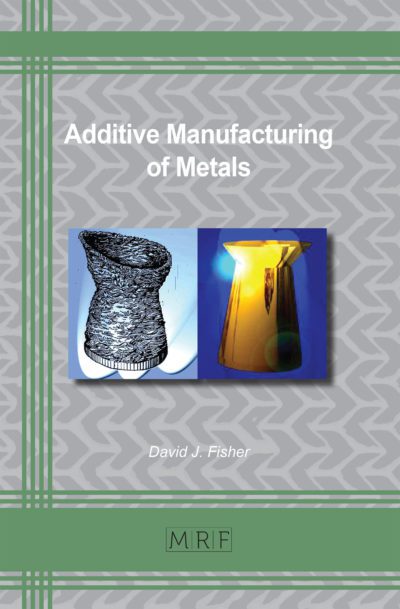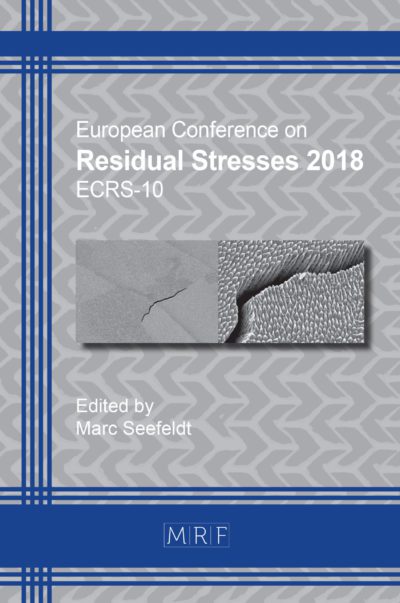Effect of retained porosity due to additive manufacturing on dynamic loadings
Benoit Revil-Baudard, Oana Cazacu, Sujeily Soto-Medina, Philip Flater
Abstract. The major advantage of additive manufacturing (AM) of metallic materials is the capacity to produce parts with complex geometry that are difficult to achieve with conventional processes. However, for applications subjected to high-strain rate loadings, improving the understanding of the dynamic behavior of AM high strenght steel is essential to enlarge the range of application for such AM metals. Experiments have shown that even if for quasi-static and moderate strain-rates (of the order of 102-103/s), the mechanical response of additively manufactured (AM) and traditionally processed materials is similar, the impact behavior is markedly different. In this paper, we reveal that the main reason for this difference is the retained porosity in the AM material. To gain understanding, a numerical study using an elastic/plastic damage model that accounts for the effects of the tension-compression asymmetry in plastic deformation and its influence on porosity evolution is performed for material with different level of retained porosity. The finite-element results reveal that even a very small amount of initial porosity leads to an increase in the shock rise time, explaining the observed trends.
Keywords
Additive Manufacturing, Plate Impact, Finite-Element, Porosity
Published online 5/7/2025, 7 pages
Copyright © 2025 by the author(s)
Published under license by Materials Research Forum LLC., Millersville PA, USA
Citation: Benoit Revil-Baudard, Oana Cazacu, Sujeily Soto-Medina, Philip Flater, Effect of retained porosity due to additive manufacturing on dynamic loadings, Materials Research Proceedings, Vol. 54, pp 330-336, 2025
DOI: https://doi.org/10.21741/9781644903599-36
The article was published as article 36 of the book Material Forming
![]() Content from this work may be used under the terms of the Creative Commons Attribution 3.0 license. Any further distribution of this work must maintain attribution to the author(s) and the title of the work, journal citation and DOI.
Content from this work may be used under the terms of the Creative Commons Attribution 3.0 license. Any further distribution of this work must maintain attribution to the author(s) and the title of the work, journal citation and DOI.
References
[1] C. H. Karnes, Mechanical Behavior of Materials Under Dynamic Loads, edited by US Lindholm, Springer-Verlag, New York, 1968.
[2] G. R. Fowles, Experimental technique and instrumentation, Dyn. Response Mater. Intense Impuls. Load., pp. 405–480, 1972.
[3] R. Seede et al., Effect of heat treatments on the microstructure and mechanical properties of an ultra-high strength martensitic steel fabricated via laser powder bed fusion additive manufacturing, Addit. Manuf., vol. 47, p. 102255, 2021. https://doi.org/10.1016/j.addma.2021.102255
[4] C. Neel, S. Gibbons, R. Abrahams, and J. House, Shock and Spall in the Low-alloy Steel AF9628, J. Dyn. Behav. Mater., vol. 6, no. 1, pp. 64–77, 2020. https://doi.org/10.1007/s40870-019-00228-5
[5] B. Revil-Baudard, P. Sable, O. Cazacu, B. Gaskey, and S. Soto-Medina, On the role of the retained porosity on the shock response of additively manufactured high-performance steel: Experiments, constitutive model and finite-element predictions, J. Mech. Phys. Solids, vol. 193, p. 105909, 2024. https://doi.org/10.1016/j.jmps.2024.105909
[6] O. Cazacu and J. B. Stewart, Analytic plastic potential for porous aggregates with matrix exhibiting tension–compression asymmetry, J. Mech. Phys. Solids, vol. 57, no. 2, pp. 325–341, 2009. https://doi.org/10.1016/j.jmps.2008.10.010
[7] G. Johnson and W. Cook, Proc. 7th Int. Symp. On Ballistics, Const. Model Data Met. Subj. Large Strains High Strain Rates High Temp., 1983.
[8] G. Kleiser, B. Revil-Baudard, R. Abrahms, B. Martin, and O. Cazacu, Influence of processing on deformation and damage in high-strength steels. 2017.
[9] O. Cazacu, B. Plunkett, and F. Barlat, Orthotropic yield criterion for hexagonal closed packed metals, Int. J. Plast., vol. 22, no. 7, pp. 1171–1194, 2006. https://doi.org/10.1016/j.ijplas.2005.06.001
[10]A. L. Gurson, Continuum theory of ductile rupture by void nucleation and growth: Part I—Yield criteria and flow rules for porous ductile media, J. Eng. Mater. Technol., vol. 99, no. 1, pp. 2–15, 1977. https://doi.org/10.1115/1.3443401
[11]O. Cazacu, B. Revil-Baudard, and N. Chandola, Plasticity-Damage Couplings: From Single Crystal to Polycrystalline Materials. Springer, 2019. https://doi.org/10.1007/978-3-319-92922-4
[12]O. Cazacu and B. Revil-Baudard, Plasticity of Metallic Materials: Modeling and Applications to Forming. Elsevier, 2020.














